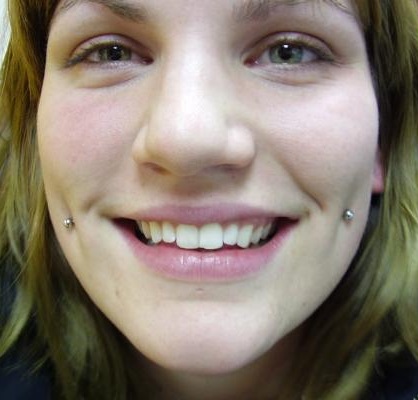 If you’re thinking about having your cheeks pierced, there are a few things you should know first. Learn about the difference between cheek piercings and dimple piercings, how cheek piercings are performed, what makes the best cheek piercing starter jewelry, where to find dimple piercing pictures, and more here in our Cheek Piercing FAQs. Read through for a full cheek piercing education, or click on your most burning dimple piercing question in the list below.
If you’re thinking about having your cheeks pierced, there are a few things you should know first. Learn about the difference between cheek piercings and dimple piercings, how cheek piercings are performed, what makes the best cheek piercing starter jewelry, where to find dimple piercing pictures, and more here in our Cheek Piercing FAQs. Read through for a full cheek piercing education, or click on your most burning dimple piercing question in the list below.
Frequently Asked Cheek Piercing Questions
Q. What’s the difference between cheek piercings and dimple piercings?
Q. Does anyone ever get just one cheek piercing?
Q. How much are dimple piercings?
Q. Is there any risk in getting my cheeks pierced?
Q. How are cheek piercings performed?
Q. Is there an ideal starter cheek piercing gauge and cheek piercing jewelry length?
Q. What’s the best style for starter cheek piercing jewelry?
Q. What’s the average cheek piercing healing time?
Q. How should I care for my pierced cheek?
Q. What should I do if I develop an irritation around either of my dimple piercings or see signs of infection?
Q. Can I get a microdermal cheek piercing?
Q. Where can I find dimple piercing pictures and cheek piercing pictures?
Q. Can I get a larger gauged cheek piercing or should I wait and stretch my cheek piercings later?
Q. Where can I find diamond cheek piercing jewelry?
Q. Where can I find clear cheek piercing jewelry/cheek piercing retainers?
Q. Is it possible to have a fake cheek piercing?
Q. Where can I get more cheek piercing info?
Answers to Common Cheek Piercing Questions
 Q. What’s the difference between cheek piercings and dimple piercings?
Q. What’s the difference between cheek piercings and dimple piercings?
A. There’s really no difference between cheek piercings and dimple piercings. Some people call them one thing, some the other. If you don’t have natural dimples, properly-placed cheek piercings can give the illusion that you do, which is why cheek piercings are also known as dimple piercings. If you do have natural dimples and piercing them won’t negatively impact your parotid ducts, then your piercer will likely suggest placing your cheek piercings in the indentation of your dimples.
Q. Does anyone ever get just one cheek piercing?
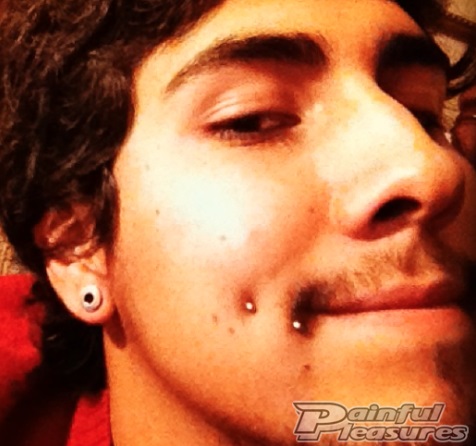 A. Typically people get cheek piercings in pairs, to make it appear that they have dimples or to accentuate their dimples. You don’t have to get both cheeks pierced, though. Some people choose to get just one cheek piercing, or to get one initially and a matching one on the other cheek later. It’s really a matter of personal preference whether you decide to get just one cheek pierced, one cheek pierced now and one later, or two dimple piercings simultaneously.
A. Typically people get cheek piercings in pairs, to make it appear that they have dimples or to accentuate their dimples. You don’t have to get both cheeks pierced, though. Some people choose to get just one cheek piercing, or to get one initially and a matching one on the other cheek later. It’s really a matter of personal preference whether you decide to get just one cheek pierced, one cheek pierced now and one later, or two dimple piercings simultaneously.
Q. How much are dimple piercings?
A. The cost of cheek piercings varies from shop-to-shop. Dimple piercings will typically cost a bit more at a tattoo and piercing shop in the city than they would in a more rural area, because the cost to do business is higher in cities. At Painful Pleasures’ studios, Body Mod Ink and The Studio at Painful Pleasures, cheek piercings cost $80. If that seems high, keep in mind that you’re getting two piercings for that price, and dimple piercings require precision and an experienced piercer. If you want just one cheek pierced, you can speak to your piercer about a reduced price.
Q. Is there any risk in getting my cheeks pierced?
A. If you want to get your cheeks pierced, it’s important to find a professional piercer who has experience doing dimple piercings. The reason is that an improperly-placed cheek piercing can damage your parotid duct, which plays an important role in saliva creation. If either or both of your parotid ducts are injured when you have your cheeks pierced, the damage will be permanent. It will leave you susceptible to infection, and infections anywhere in the head are very serious because of the close proximity to your brain. Piercing through the parotid duct can also cause saliva to constantly stream down the outside of your cheek. The only way to address that issue is to have the tissue cauterized, but again, the parotid duct cannot be fully repaired once it’s been damaged. This is NOT a piercing you should have done unless your piercer comes highly recommended, s/he has successfully performed cheek piercings in the past, and his or her portfolio includes dimple piercing pictures (preferably ones of healed dimple piercings).
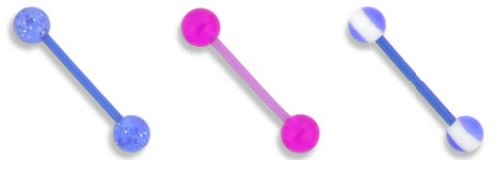 After getting your cheeks pierced, there’s also a small risk of damage to your teeth. You have to be careful not to bite down on the barbells, particularly when you’re wearing extra-long barbells and your cheeks are swollen during the healing process. If that becomes an issue for you, or you want to prevent damage to your teeth, you can ask for soft BioFlex (PTFE) barbells as your starter cheek piercing jewelry.
After getting your cheeks pierced, there’s also a small risk of damage to your teeth. You have to be careful not to bite down on the barbells, particularly when you’re wearing extra-long barbells and your cheeks are swollen during the healing process. If that becomes an issue for you, or you want to prevent damage to your teeth, you can ask for soft BioFlex (PTFE) barbells as your starter cheek piercing jewelry.
Q. How are cheek piercings performed?
A. When you go in to have your cheeks pierced, your piercer should examine your mouth and locate your parotid ducts. S/he will then mark your cheeks in the two best spots–spots that will either highlight your existing dimples or give you the look of having dimples, and that are not too close to your parotid ducts.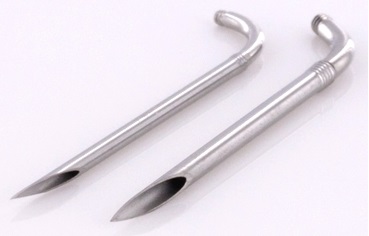
Once your cheeks have been marked and you’re happy with the placement, your piercer will prep your skin to be pierced. S/he may also have you swish an oral rinse around the inside of your mouth before proceeding, too.  Your piercer will then pierce one cheek, typically with either a 14g or 16g needle. S/he may use a threaded needle and pierce your cheek from the inside-out, so that your cheek piercing jewelry can be easily pulled through immediately behind the needle. If you’re pierced from the outside of your cheek in, then your piercer may hold a piercing cork inside your mouth to receive the needle and prevent damage to your tongue or other parts of your mouth. After inserting your cheek jewelry, your piercer will screw on the outer ball or other decorative threaded end, and then proceed with piercing your other cheek.
Your piercer will then pierce one cheek, typically with either a 14g or 16g needle. S/he may use a threaded needle and pierce your cheek from the inside-out, so that your cheek piercing jewelry can be easily pulled through immediately behind the needle. If you’re pierced from the outside of your cheek in, then your piercer may hold a piercing cork inside your mouth to receive the needle and prevent damage to your tongue or other parts of your mouth. After inserting your cheek jewelry, your piercer will screw on the outer ball or other decorative threaded end, and then proceed with piercing your other cheek.
The adrenaline rush you experience before being pierced should help dull the pain of the piercings. However, if you’re worried about the pain, you can ask your piercer to apply a topical anesthetic before piercing you to numb the surface of your skin. You can even purchase a product like Dr. Numb or Derma Numb and apply it at home before going to get your piercing, so that your cheek will be thoroughly numb by the time you get there. If applied at the piercing shop, you’ll need to wait at least 15-20 minutes for your skin to absorb it and be numbed.
Q. Is there an ideal starter cheek piercing gauge and cheek piercing jewelry length?
A. Typically, cheek piercings are done with either 14g or 16g body jewelry. Your starter cheek piercing jewelry will need to be extra-long to accommodate any swelling that occurs. On average, cheek piercing barbells are around 1″ long, but the size can range from 1/2″ to 1-1/2″, depending on the thickness of your cheeks.
If your cheek piercing barbells are too short and your cheeks swell severely, the jewelry could press into your cheeks. If that were to happen, you’d need to go back and have your piercer replace your cheek jewelry with longer barbells. It’s important to avoid prolonged pressure on healing piercings, because it can cause necrosis (tissue death) that can lead to infection.
Q. What’s the best style for starter cheek piercing jewelry?
A. Piercers typically use labret-style jewelry with an extra-long shaft for cheek piercings, but a straight barbell may also be used. These are the 4 most popular options for starter cheek jewelry available from Painful Pleasures:

|

|

|

|
You can replace any of the balls shown on the starter cheek piercing jewelry above with your choice of internally-threaded ends or threadless ends in the same gauge. Choose from a wide variety of styles, including cones, prong-set gems, ends in cool shapes like stars and hearts, and many other decorative end designs. The jeweled internally-threaded end to the left is one example of our many custom-made tops/ends, which are available in yellow or white gold and your choice of gems.
Q. What’s the average cheek piercing healing time?
A. Cheek piercing healing time varies by individual, but expect it to take at least 8-12 weeks for yours to heal. Some people say they didn’t feel their cheek piercings were fully healed until 6+ months later, but the average is 3 months. It can take longer for some individuals, particularly if you experience any problems during the healing process that delay healing (e.g. infection or other irritations).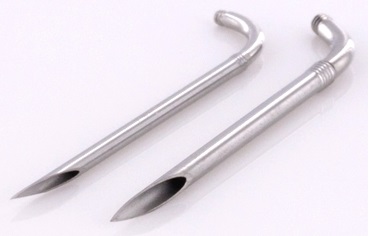
Cheek piercing jewelry can typically be changed after 6-8 weeks, with the help of your piercer. It’s a good idea to have your barbells changed at that point, once any swelling has subsided, so that you can minimize the risk of biting down on your barbells. You can crack a tooth if you chomp down too hard on a metal barbell, so switch to shorter ones as soon as your piercer gives you the okay.
The longer you have your cheek piercings, the more reinforced the fistulas (piercing holes) will become. As your fistulas strengthen over time, it will become easier for you to change your cheek piercing jewelry yourself. If you have trouble changing your jewelry, you can try using a threaded taper to pull your new jewelry through and/or apply a very small drop of a water-based lubricant like Astroglide to the outside of your cheek before attempting to insert your new jewelry.
Q. How should I care for my pierced cheek(s)?

For your full cheek piercing cleanings, soak a cotton ball with Recovery saline wash or a homemade sea salt solution (see recipe and instructions below) and press it to one of your piercings for 5 minutes. Repeat on the other side with a clean cotton ball, and then swish your mouth with sea salt oral rinse for 5 minutes.
In between full soaks, you should mist the outside of your piercings a few times a day with Recovery Piercing Aftercare Spray. You should also rinse the inside of your mouth with sea salt oral rinse after you eat. You don’t want to leave any food debris trapped in or around your cheek piercings, because it could fester and cause an infection.
Homemade Sea Salt Solution
Mix 1/4 teaspoon sea salt into 1 cup sterile water. You can sterilize tap water by boiling it for 5 minutes. If you’re not sure where to get sea salt, purchase aquarium salt from a pet store.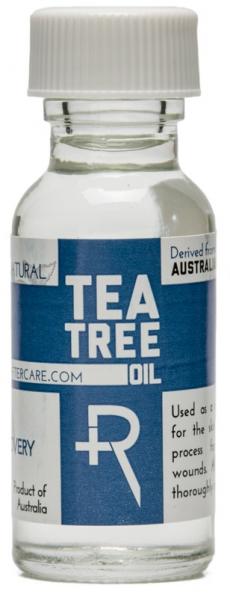
To enhance your homemade sea salt solution, add 2-3 drops of tea tree oil. It has natural moisturizing and antiseptic properties that will aid in the healing process and keep your skin moisturized.
Once your sea salt solution is ready, apply it to your piercings with a series of clean cotton balls as instructed above. You can rinse your mouth with this solution, too, but only if you set some aside to use as an oral rinse before adding tea tree oil to it to treat the external side of your piercings.
What to Do About Crusties
If a whitish-colored crust develops around your cheek piercings, don’t be concerned. That’s just dried lymph, and it’s normal for your body to excrete lymph when healing any wound. Before it dries, lymph is a mostly-clear fluid, but it dries to a whitish crust (hence the name “crusties”). To remove crusties safely, simply saturate a cotton ball with saline wash, and hold it to your cheek piercing(s) until the crusties have softened. You should then be able to gently wipe them away with a tissue or cotton swab without irritating the skin around your piercings as you might if you picked at the crust. Never twist, turn or slide your cheek jewelry to loosen crusties!
If at any point your piercings start discharging a thicker, yellowish, pus-like substance instead of just clear lymph, you may have an infection. Learn about spotting signs of infection and what to do if you suspect you have one by reading the next answer.
Q. What should I do if I develop an irritation around either of my dimple piercings or see signs of infection?
A. There are a variety of irritations and scars that can form around dimple piercings. You may experience hypergranulation, which is a smooth, reddish bump right at the piercing site that appears almost fluid-filled. Hypergranulation is typically the result of prolonged pressure from jewelry that’s too tight, but it can occur for other reasons, such as getting food or other debris trapped in your piercing, excess moisture, or friction (e.g. rubbing your face against your pillow at night). To address hypergranulation, change your jewelry to a longer barbell and ramp up your aftercare routine to 3 full soaks a day and more frequent saline wash misting and oral rinse swishes. The issue should subside with time and attentive cheek piercing aftercare.
Some people develop hypertrophic scars around their piercings, and a small percentage of people may develop keloid scars. Keloid scarring is typically a hereditary issue that affects a minimal percentage of the population. People commonly make the mistake of thinking they’re plagued by a keloid when they really have a hypergranulation issue or they’ve developed a hypertrophic scar around a piercing. 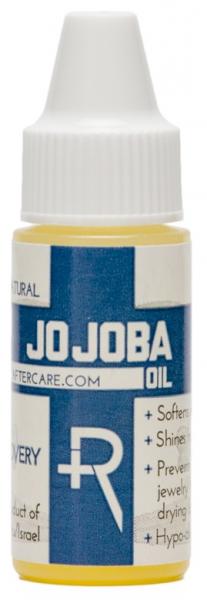 Keloids are darkly-colored, smooth, oddly-shaped bumps that develop around a piercing and that tend to continue growing exponentially. If you know you’re prone to keloids, you should not risk piercing any part of your face.
Keloids are darkly-colored, smooth, oddly-shaped bumps that develop around a piercing and that tend to continue growing exponentially. If you know you’re prone to keloids, you should not risk piercing any part of your face.
Unlike keloids, hypertrophic scars tend to form in the immediate area around the opening to a piercing. They’re small, round, typically-flat-topped scars that are closer to skin color. If you develop a hypertrophic scar, just ramping up your aftercare regime may address the issue. Once your piercing is fully healed, you can apply jojoba oil daily to minimize scarring, or you may consider seeing a dermatologist to find out what your other options are. If your jewelry is tight, you should definitely switch to a longer barbell until the issue subsides or the scar is manually removed.
If you suspect you’re developing an infection in either or both of your cheek piercings, it’s very important to ramp up your aftercare regime until the issue subsides. You can’t overuse saline spray/rinse, so mist your piercing frequently, do 2-3 full soaks per day, and swish your mouth with sea salt oral rinse morning, noon and night and any time you’ve just eaten. If the infection progresses to the point that your piercing discharges thick, yellowish pus instead of just clear lymph, or your skin is hot to the touch and/or red streaks begin to radiate from either piercing, then it’s time to see a doctor about getting on an antibiotic. If your doctor tells you that you have to remove your cheek piercings, don’t worry; as long as you practice religious aftercare while taking the antibiotic and beyond, you shouldn’t have to remove your cheek jewelry.
If at any point you choose to remove your cheek piercing jewelry, keep cleaning your fistulas regularly until they’re fully closed. Note that you very well may be left with small scars where your cheek piercings were after removing your jewelry. You may want to try applying an appropriate silicone gel once the fistulas are closed to reduce scarring.
Q. Can I get a microdermal cheek piercing?
A. Dermal piercings can be placed nearly anywhere on the body, including the cheeks. On the plus side, a dermal piercing wouldn’t completely pierce your cheek, so you’d only have to worry about caring for it externally with a product like Recovery Piercing Aftercare Spray. However, microdermal cheek piercings may not give you the same dimple-enhancing effect that regular cheek piercings would. Whether or not you get microdermals instead of traditional cheek piercings depends on the final visual effect you’re seeking. 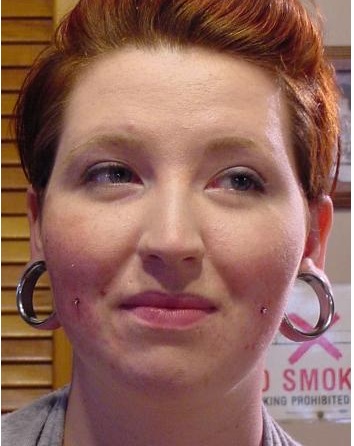 Talk to your piercer about your options and then decide which way you want to go.
Talk to your piercer about your options and then decide which way you want to go.
Q. Where can I find dimple piercing pictures and cheek piercing pictures?
A. Our photo gallery is filled with cheek piercing pictures that our community members have shared. You can add pictures of your own dimple piercings by becoming a member, logging in, and clicking the link to upload a photo. For detailed instructions on using our photo gallery, read our How to Use the Gallery article.
Check out the Piercing Videos section of our YouTube channel if you’re interested in seeing some in-progress piercings. We add new videos regularly, so stay tuned to see when we add a dimple piercing video!
Q. Can I get a larger gauged cheek piercing or should I wait and stretch my cheek piercings later?
A. When you first get your cheeks pierced, you can ask your piercer to use a larger gauge needle and larger gauged cheek piercing jewelry. Typically cheek piercings are done in the 16g to 12g range, but you can start out at a much larger size, if desired. Alternatively, you can stretch your cheek piercings slowly later, so that you only stretch up until you reach the size that looks best on you.
If you want to stretch your cheek piercings, you need to wait until they’re fully healed. If you go up a whole gauge at a time, you should give your body 1.5 times as long as it took you to heal initially before attempting another stretch (i.e. 12-18 weeks minimum). Instead of going up whole sizes at a time, you may want to consider stretching slowly using stretching tape. Simply remove your jewelry, add a layer of tape, and re-insert the jewelry. Since you’ll be increasing the size of your jewelry by mere millimeters using the tape method, you can add layers of tape to your jewelry more frequently than you could if you went up a whole size at a time.
Before stretching your dimple piercings, you should apply emu oil to the outside of your cheeks daily for at least a week. Emu oil is a moisturizer, but more importantly, it increases your skin’s elasticity. Massaging some emu oil into your cheeks before stretching will make the skin more supple and make it easier for you to increase your jewelry size with less trauma to your skin.
Q. Where can I find diamond cheek piercing jewelry?
 A. The Painful Pleasures Signature Collection includes a stunning diamond-studded surgical stainless steel labret in both 14g and 16g that you can wear as cheek piercing jewelry, if you choose one of the longer barbell lengths. We also offer a wide variety of other upscale fashion jewelry for cheek piercings, including custom gold labrets and tops studded with your choice of gemstones.
A. The Painful Pleasures Signature Collection includes a stunning diamond-studded surgical stainless steel labret in both 14g and 16g that you can wear as cheek piercing jewelry, if you choose one of the longer barbell lengths. We also offer a wide variety of other upscale fashion jewelry for cheek piercings, including custom gold labrets and tops studded with your choice of gemstones.
Q. Where can I find clear cheek piercing jewelry/cheek piercing retainers?
 A. We offer a wide variety of piercing retainers that can be worn in a cheek piercing. Choose from 14g and 16g flesh tone tops for your cheek piercing jewelry, as well as clear straight barbells with clear tops made from your choice of acrylic or glass that make perfect cheek piercing retainers.
A. We offer a wide variety of piercing retainers that can be worn in a cheek piercing. Choose from 14g and 16g flesh tone tops for your cheek piercing jewelry, as well as clear straight barbells with clear tops made from your choice of acrylic or glass that make perfect cheek piercing retainers.
Q. Is it possible to have a fake cheek piercing?
A. There’s a possibility that you could find magnetic jewelry with a strong enough magnetic pull to hold a decorative piece on the outside of your cheek with an opposing magnet placed inside your cheek. Painful Pleasures doesn’t currently carry any magnetic jewelry that would be appropriate for a fake cheek piercing, though.
Q. Where can I get more cheek piercing info?
A. For additional cheek piercing info, check out the following pages:
- Painful Pleasures Tumblr Blog:
- Response to the Question, “I want to get my cheeks pierced. Could you give me some advice?“
- Warning About Cheek Piercings
- Response to the Question, “I’m looking to get my cheeks pierced. Can you give me any tips or tell me more about the piercing and what to expect?“
- Facial/Oral Piercings Section of the Painful Pleasures Forum
- Dimple Piercing Pictures Section of the Painful Pleasures Photo Gallery
- Types of Body Piercings (under “Oral & Facial Piercings”)


